How to make a pipe bender with your own hands: examples of the best homemade products
The desire to equip a country house and a plot dictates the need for a maximum of tools. When carrying out a water supply system, building a greenhouse, installing arched structures, one cannot do without a good pipe bender. Its cost in stores is measured in hundreds of dollars, so it is better to make this tool yourself.
We will tell you how to make a pipe bender with your own hands. The article we presented describes in detail the proven designs in practice, provides step-by-step guides for assembly. Based on our advice, you can build a great tool for your own farm.
The content of the article:
Types of pipe benders on the market
Pipe benders are mechanical or hydraulic structures that help bend metal pipes, corners, rods, profiled steel without violating the internal structure of the product. Hand tools are mainly used to form a bend in one place, and large machines can change the shape of the pipes immediately along the entire length.
By the principle of work, pipe benders of the following types can be distinguished:
- Mechanical with direct manual effort. Used when working with pipes of small diameters, the deformation of which is enough force of one person.
- Hydraulically driven. Mostly such tools are made on a crossbow type, and they are designed to form a local bend.
- With ratchet gear. Pipe benders of this type use manual force, but they allow to fix the achieved level of deformation after each pressing of the tool handle.
- Electric machine tools. The electric motor greatly facilitates the process of pipe deformation, but also significantly increases the cost of the tool.
Features of working with some types are discussed below:
Structurally benders can be divided into 2 types:
- Radius
- arbalest.
In the first case, the pipe bends around a template segment of a given diameter, and in the second case, it is extruded with a shoe between two support posts.
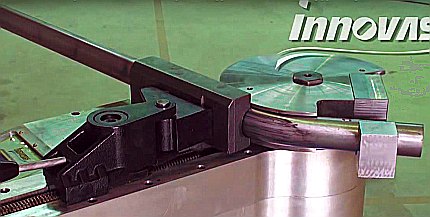
With the independent production of a pipe bender, craftsmen usually rely on existing models of the tool, which have proven their simplicity and effectiveness. When assembling a pipe bender at home, its construction is greatly influenced by improvised materials from which the tool will be made.
The presence of a pipe bender among the tools of a home master will allow you to make many useful constructions and garden items in your own home:
Necessary assembly tool
To make a good pipe bender with a hammer, screwdriver and screws will fail.
At a minimum, in the manufacture of this tool you will need:
- welding machine;
- Bulgarian;
- lathe;
- drill.
But the main part of the assembly of the pipe bender remains the exact drawing, without which it is not even worth starting the assembly work. In the manufacture of a pipe bender, one cannot do without general economic tools.
Naturally, it is not necessary to purchase a lathe and a welding machine. For the undercutting of several parts from the workpieces and for their welding, you can contact your friends or in the workshop engaged in the manufacture of forged products. For a small fee, they will quickly help you do everything you need.
How to make a snail pipe bender?
Self-made cochlear bending machine may seem difficult. In fact, this device is no more difficult to assemble than a roller bender. The process differs only in the parts used and the assembly time.
The cochlear bender allows you to bend the profile along the entire length at once, and not just in one place. For this property, he gained popularity among installers.
Necessary materials and tools
Since the described roller bender does not have a specific working diameter and can be made of any improvised materials, the proposed materials will not contain specific dimensions of the parts. The thickness of all metal structural elements should be 4, and preferably 5 mm.
To make a pipe bender you will need:
- Channel - 1 meter.
- Sheet iron.
- Three shafts.
- Two stars.
- Metal chain.
- Six bearings.
- Metal 0.5-inch pipe for the manufacture of collars - 2 meters.
- Sleeve with internal thread.
- Clamping screw.
Particular attention is paid to the sizes of sprockets, shafts and bearings, which must correspond to each other. Stars can be taken from old bicycles, but they must be exactly the same in size.
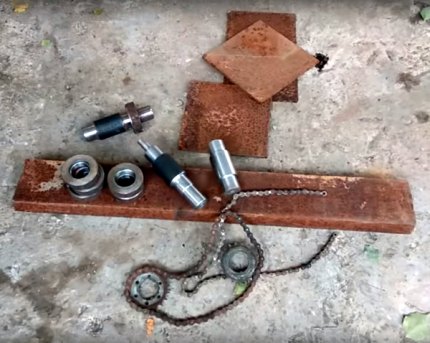
Before choosing and buying all materials, you need to draw a drawing with a schematic representation of all structural elements so as not to purchase them in the process of manufacturing a pipe bender.
Assembly process of cochlear bending machine
The assembly of any equipment begins with the preparation of a drawing diagram.
After that, you can start the basic workflows that are demonstrated in the photo instruction:
- Weld the base of the tool from two parallel channels. If desired, you can use just a metal plate 5 mm thick or one wide channel.
- Put bearings on the shafts and weld two of these structures to the base. It is advisable to limit the shafts with metal strips or place them in the inner cavity of the channels.
- Dress the sprockets and weld them by first pulling the chain between them.
- Cut and weld to the base side guides of the clamping mechanism.
- Put bearings on the clamping shaft and assemble the press structure with side stops from strips or channels.
- Make a base for the sleeve and weld it to the plate. Screw in clamping screw.
- Weld to the upper edge of the clamping screw and to the drive shaft of the gate from the pipes.
- Lubricate bearings with machine oil.
Some useful tips:
After pipe bender assembly and its tests can paint the structure with anti-corrosion paint for better preservation of welds. To increase the convenience of work, a spring is additionally attached to the guides to return the press to its upper position.
Making a manual roller model
Making a manual pipe bender with your own hands is done from the same steel parts without the use of special mechanical devices. This device is designed to bend the pipe locally. Direct manual effort is used to deform the profile, so the pipe bender must be equipped with a long and strong lever.
Next, we will consider the manufacturing process of a two-roll pipe bender that is attached to a support frame. The dimensions of the tool may differ from the proposed, depending on the needs and materials.
Necessary materials and tools
Pipe deformation is a labor-intensive process, which requires good and durable materials, otherwise, instead of a profile, you can bend the working tool itself.
To make a mechanical manual radial pipe bender you will need:
- Welding machine.
- Two castors made of strong steel (for example, grade 1045) that have undergone preliminary turning. The larger diameter is 100 mm and the smaller is 60 mm. Both are 35 mm thick and have an outer radius of 0.5 inches.
- Steel pipe with a diameter of at least 1.5 inches with a thick wall (minimum 3 mm). It will serve as a lever, therefore its minimum length is 1.5 meters.
- Four steel strips with a size of 15 x 6 cm and a thickness of 4-5 mm for fixing the base of the pipe bender in a vice, pipe supports and manufacturing handles. You will also need 20-25 cm of a steel plate 60 mm wide and 3 mm thick.
- Two bolts: the first with a diameter of 0.75 inches and a length of 60 mm for a large roller, and the second with a diameter of 0.5 inches and a length of 40 mm for a small roller.
- Steel plate 300 x 300 mm and a minimum thickness of 3 mm.
- Vise.
In the process, you may need other general business tools: a hammer, files, sandpaper, a ruler, etc. The above rollers are designed exclusively for pipes with a diameter of 1 inch, but excluding from them a recess around the circumference, you can get a universal tool for bending a metal profile.
Pipe bender manufacturing process
When all the necessary parts and tools are assembled in one place, you can proceed directly to the manufacture of a pipe bender:
- Prepare a drawing with a layout of the location of the main elements.
- Check the compatibility of the holes in the rollers with the diameter of the bolts.
- Drill two holes with a diameter of 0.5 and 0.75 inches in two metal strips. The distance between the axes of the holes should be exactly 80 mm (the sum of the radii of both rollers).
- Make a hole in the center frame with a center diameter of 0.75 inches. Insert the corresponding bolt into it without protruding it from the back. Weld a bolt to a metal plate.
- Take the drilled metal plates measuring 15x6 cm, a 0.5-inch bolt, a smaller roller, a strip of steel 35 x 60 mm and weld a structure in the form of the letter "P" from them, after inserting the bolt with the roller on into the corresponding holes.
- Weld the ends of the bolt to the metal strips. You should get a kind of horn with a hole of a larger diameter closer to the open edge.
- To the base of the resulting horn, you need to weld a pipe handle.
- Weld the support plate for the pipe onto a metal frame. The distance from the bar line to the center bolt axis should equal the radius of the large roller plus 0.5 inches.
- Weld a 15 x 6 cm strip below the bed for fixing in a vice.
- Insert a large roller into the horn, attach the structure to the central bolt and screw the nut on top.
- Clamp the pipe bender in a vice and conduct the first tests.
Important manufacturing nuances:
The weak point in the entire resulting structure is the welds, so they are given special attention in the process of manufacturing a pipe bender.
Automotive hub pipe bender
Another unique pipe bender from craftsmen is a tool assembled from a metal profile and automobile hubs. Its design is massive and simple, which allows you not to worry about breakdowns during operation.
The manufacturing process of such a pipe bender is as follows. Two automobile hubs with a knuckle or turned shafts are screwed or welded to the frame so that they can rotate around their axis.
Between the hubs there is a guide motionless channel, which can be welded from two corners. A smaller channel is located inside the guide structure, a third hub with a rotary axis is welded to one edge of the channel, and a nut or threaded sleeve for the pressure bolt is welded to the second one.
At the edges of the guide channel, strips or angles are welded to limit the vertical movements of the moving part of the structure. The edge of the main groove is closed with a sheet of metal with a hole for the clamping screw. On the other side of the plate, a gate handle is welded to the screw.
The result is a roller bender with a local clamping force. If the handle for rotation is screwed to the upper part of the movable hub, then with the help of such a tool it becomes possible to bend the profile along the entire length.
The considered pipe bender is a powerful and versatile tool that can be assembled with a minimum of costs, because old hubs at car services can be taken at the price of scrap metal.
Making a pipe bender
A jack bender is the most basic tool for deforming a metal profile and pipes, which you can build yourself.
For its manufacture, such products will be required:
- car jack;
- two channels with a width of 100 mm and a length of 60 cm;
- four corners with sides 50 mm and a length of 40 cm;
- bed base;
- two rollers in the form of an hourglass with through central holes;
- 2 bolts for attaching rollers;
- semicircular nozzle for a jack with an internal recess.
If the procurement of raw materials and the assembly process seem unnecessarily time-consuming to you, then hydraulic pipe bender it is better to get ready-made. The rules of equipment selection will be introduced by our recommended article.
To make a jack bender, you need:
- Weld the four corners in an upright position to the bed.
- In the channels from the center to the edge, drill holes for the bolts that will hold the rollers on both sides.
- For every two corners, put a channel with an edge and weld it. Both channels should be turned to each other with their bases, and the distance between them should be equal to the length of the rollers.
- Insert the rollers between the channels in symmetrical places and fasten them with bolts.
- Install a semicircular nozzle on the jack screw and place the hydraulic tool in the center of the bed between the channels.
After assembling the structure, you can put the pipe on the bottom of the rollers and press it in the center with a semicircular nozzle using a jack.
The disadvantage of this device is its static nature, because it will not work to scroll the entire length of the profile through a pipe bender.
The advantages of a jack bender include low cost, simplicity of design and the absence of the need for heavy physical labor.
Those who want to make a machine for working with profile pipes will find a lot of useful information in the next article, the contents of which we advise you to read.
Conclusions and useful video on the topic
The presented video materials will help to see the above recommendations for the manufacture of homemade pipe benders in dynamics, as well as introduce additional options for assembling these tools from improvised materials.
Video # 1. Rolling jack bender:
Video # 2. Making a pipe bender:
Video # 3. Hub bender assembly:
Video # 4. Production of cochlear bending machine:
Types of home-grown tools for bending a metal profile are not limited to the proposed options, because a pipe bender with your own hands can be made from any parts available on the farm.
The main thing is to build a clamping mechanism that will push the pipe between the two posts or the roller system to deform the entire profile at once.
Want to talk about how to make a pipe bender with your own hands? Is there a tool option in your arsenal that is not described in the article? Please write comments in the block below, share useful information, photos on the topic of the article, ask questions.

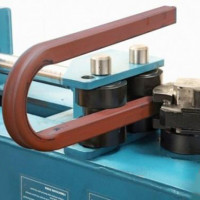 How to build a pipe bender for your profile pipe yourself: an overview of the best homemade products
How to build a pipe bender for your profile pipe yourself: an overview of the best homemade products  How to choose a hydraulic pipe bender: types of equipment and its features
How to choose a hydraulic pipe bender: types of equipment and its features 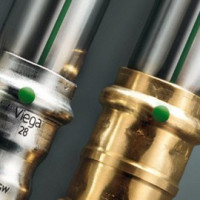 Fittings for steel pipes: types, classification, marking and installation examples
Fittings for steel pipes: types, classification, marking and installation examples 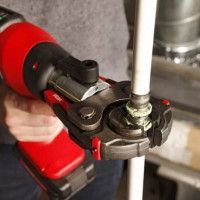 Fittings for plastic pipes: types, applications, an overview of the best manufacturers
Fittings for plastic pipes: types, applications, an overview of the best manufacturers 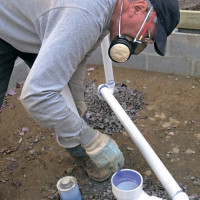 Glue for PVC pipes: an overview of the best compositions and instructions for use
Glue for PVC pipes: an overview of the best compositions and instructions for use 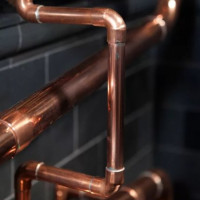 Copper pipes and fittings: types, marking, features of the arrangement of a copper pipeline
Copper pipes and fittings: types, marking, features of the arrangement of a copper pipeline  How much does it cost to connect gas to a private house: the price of organizing gas supply
How much does it cost to connect gas to a private house: the price of organizing gas supply  The best washing machines with dryer: model rating and customer tips
The best washing machines with dryer: model rating and customer tips  What is the color temperature of light and the nuances of choosing the temperature of the lamps to suit your needs
What is the color temperature of light and the nuances of choosing the temperature of the lamps to suit your needs  Replacement of a geyser in an apartment: replacement paperwork + basic norms and requirements
Replacement of a geyser in an apartment: replacement paperwork + basic norms and requirements
We need some kind of working and simple pipe bender that can be assembled without a lathe (I do not have one). Of the proposals I liked the option of automobile hubs. See if he is able to make the same arcs or a run-up would be significant.